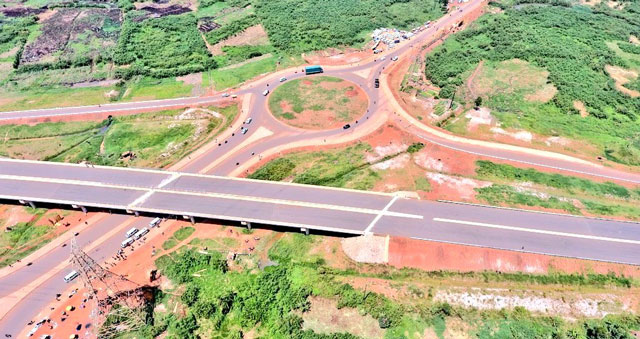
Why guarantees and provisions offered for bankability of projects, shouldn’t be politically unattractive to public
COMMENT | NICHOLAS AGABA RUGABA | Over the last three months or so, there has been wide public debate and extensive media coverage on various public private partnerships and projects involving developing specialised health facilities, harnessing agricultural commodities and supply of energy/electricity services in Uganda.
The debate and coverage is mainly focused on the role of the government and by extension public entities in public private partnerships (PPPs). PPPs are a contractual means to deliver public assets and public services. PPP contracts include those intended to develop and manage new infrastructure for example the proposed Jinja-Kampala Expressway that will connect a regional city to the capital city Kampala. PPPs also include contracts to undertake significant upgrades to existing infrastructure namely airports, urban transport roads, power plants etc. All these are called infrastructure PPPs. PPPs also include contracts under which a private partner manages existing infrastructure for example managing operations and maintenance of an expressway or toll road. These are known as service PPPs.
Whereas it is agreed that we have a huge infrastructure gap in Sub-Saharan Africa, the challenge still remains on how to mobilise resources to invest and implement infrastructure projects that are critical for industrialisation, service delivery, job creation and economic growth. The bulk of the infrastructure projects that are critical for economic growth are within the mandate of government, which has resource and budget constraints in the short and medium term.
In this regard, it has become increasingly important and critical, both nationally and globally to attract private investment in developing and implementing of public infrastructure projects and public assets. Some of the key considerations for private sector investment in public infrastructure projects include bankability and affordability of the projects. Bankability is key for the private sector players (investors, contractors, banks etc), while affordability is critical for government and public entities. Globally, it is agreed that the issue is not the lack of funding and private capital for infrastructure, but the issue is the lack of bankable projects to attract the available funding and capital. That probably begs the question, what influences bankability of infrastructure projects to attract the private investment?
Most of the medium and large infrastructure projects in Uganda require capital investment in excess of USD 50 million (Shs180 billion) per project. According to a study on road infrastructure cost done by African Development Bank in 2010/2011, for small road projects (of less than 100km length), the unit rates for construction or upgrading of paved roads were up to USD 1,400,000 per lane kilometre. This implies that a 20Km road to a cattle corridor from Luwero town to Lwamawungu in Nakaseke district will require at least USD 56 million (Shs200 billion).
Relatedly, according to the International Renewable Energy Agency (IRENA), the typical costs for hydropower projects ranges from USD 1.05 million to USD 8.00 million per Megawatt (MW) of installed capacity. The implication is that a hydropower project with installed capacity of 50MW (to power a regional industrial park) could cost at least USD 100 million (Shs370 billion) in capital expenditure. This thus begs the question, can the private sector partner with government to invest and implement such projects in light of the reality that our government has budget and resource constraints in the short and medium term? What will attract and incentivise the private sector to invest in such projects? Such projects will also have to attract foreign investors for both equity and debt financing, since there is limited local capacity to invest in such large infrastructure.
For perspective, Stanbic Bank’s loan book was valued at Shs3.72 Trillion for the year ended December 2021. This implies that our local banking industry is yet to develop the muscle and capacity to finance infrastructure projects that require large capital outlays in the short and medium term.
Beyond the capacity of our banking sector to finance these infrastructure projects, there are bankability requirements set by foreign investors for these projects. Development Banks and Multi-Lateral Banks that can finance these projects have very stringent bankability requirements. Project lenders and financiers will want to establish if the revenue from the energy projects is ring fenced for operational expenditure and loan payments for the commissioned project. This is ensured either through user payments for example the fees paid by users of the Entebbe Expressway at the toll gates.
Project lenders require a comprehensive loan security package for the debt financing needed for the project. For public infrastructure projects, this may include concession agreements or power purchase agreements between the project developer and a national entity/off taker, and the lender being granted step-in-right in the various project agreements.
Other measures to ensure bankability of a project include government providing guarantees to project developers and lenders for infrastructure projects. For example, government may issue minimum urban transport projects or availability payments for specialised hospital projects, for them to attract funding from international lenders. Your typical project finance transaction will also require the developer to pledge their equity/ shares in the project and also mortgage the project company’s assets including land, plant and equipment. However, such guarantees and provisions that are critical for bankability of the project, are not politically attractive to the general population. This is worsened by the reality that our local private sector (including equity investors and banks) doesn’t have both resources and capacity to invest in medium and large infrastructure projects namely airports, industrial parks, roads, power plants etc.
In such circumstances, it may be better to consider government agencies and public entities taking equity stakes in project companies/developers engaged in public private partnerships. Such project structuring may also include government providing land, capital grants and guarantees for projects. Other government contributions to public private partnership projects may include project development costs for feasibility studies, transaction advisors and project consultants. This approach to project structuring will not only ensure that government has oversight over governance aspects in the project company but also will enhance stakeholder management, public acceptance and support of infrastructure projects developed and financed with both private and public capital.
****
Eng. Nicholas Agaba Rugaba.
The writer is a PPP Practitioner and a Member of the Uganda Institution of Professional Engineers (UIPE)
Email: rugaba.nicholas@gmail.com
Twitter: @RugabaAgaba
 The Independent Uganda: You get the Truth we Pay the Price
The Independent Uganda: You get the Truth we Pay the Price



